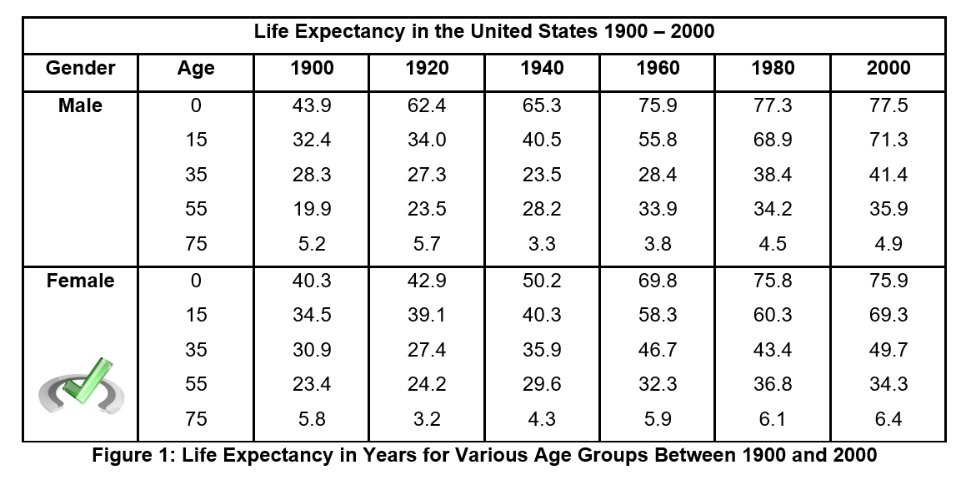No matter how diligently you study and prepare for the MCAT sociology, you could still experience worry and anxiety on test day. This may occasionally cause you to ignore small information that could lead to an incorrect answer.
The key in these situations is examining and re-reading your responses to prevent minor errors.
If you are worried about how you will perform on the MCAT and are seeking strategies to review the MCAT sociology section, this post is for you.
Please continue to read.
What is MCAT Sociology?
Sociology studies social interaction, social change, social roots, and the consequences of human activity. Sociologists study the institutional frameworks of organizations, groups, and communities and the social interactions that take place inside them.
Sociology covers a wide range of topics, including the close-knit family, organized crime, the violent mob, religious cults, racial, gender, and social class differences, and the sociology of labor and sports.
Prospective doctors must possess sociological knowledge to provide the best care to a varied patient population and comprehend how social interactions affect health.
Sociology makes up 30% of the psych/soc portion of the MCAT. This suggests that 18 of the 59 test questions include sociological information.
Summary Table of Sociology Distribution in the MCAT
MCAT Section | Chemistry Subject | Percentage | Number of Questions (out of 59) |
|---|---|---|---|
Psychological, Social, and Biological Foundations of Behavior | Introductory Sociology | 30% | 18 |
Total Number of MCAT Psychology Questions: 18 | |||
Sociology Topics to Study for the MCAT
There are many components of sociology, not all of which will be assessed on the MCAT. As you study for the MCAT, you must become familiar with the topics that will be addressed.
The following is a list of the sociology MCAT study topics you should focus on
How to Review the MCAT Sociology Section: 6 Useful Tips
Achieving a high score on the MCAT is possible. You must employ the best and proven tips and techniques that other MCAT achievers have used.
One such technique is to go over your answers and review them. Double-check if you did not miss any crucial information.
Here are some tips you must remember to help you review the MCAT sociology section.Read and Understand What the Question Is
Before taking the exam, carefully read the guidelines to avoid making procedural mistakes. This is your opportunity to gather your thoughts and relax if you are feeling worried.
To understand the question, you must recognize its key concepts and the information it seeks.
The question must specify the subject being tested and whether it is a direct or application question.
Example:
Mark puts a lot of effort into his physics coursework, yet he often receives low marks on exams and lab tasks. He eventually realizes that nothing he does will help him perform better in physics. Mark is doomed to failure in physics and doesn't even bother trying when given future homework. This is best characterized as:
A. acquired powerlessness
B. a central point of control within
C. dissonance
D. the basic attribution mistakes
Explanation:
You have to analyze the situation given and identify what is happening for you to be able to answer the question correctly.
When someone makes a sincere effort yet repeatedly fails at a task, they develop learned helplessness. Over time, the person develops an external locus of control. It means that option B is incorrect.
While this may apply to the scenario described in the question stem, there is insufficient information to conclude that Mark's idealized self includes being successful in physics. Incongruity is the idea that the authentic self has fallen short of the ideal self. Option C is wrong.
A person commits the fundamental attribution error when they blame other people's behavior—rather than their own—on their personalities. This makes option D also incorrect.
Eventually, a person concludes that they have no control over the outcome and gives up.
Therefore, the correct answer is option A - acquired powerlessness.Examine Every Response
This entails looking at each response's criteria to rule out potential outcomes. To narrow the options to just one, one can eliminate unnecessary replies from the list of possibilities.
While doing this, go back to the initial question frequently to make sure you are just eliminating responses that are not relevant.
Example:
When a lion approaches, one of the monkeys in the group will warn the others by making a lot of noise, jumping up and down, and waving its arms to get the lion's attention. This behavior is best characterized as:
A. social isolation
B. exclusive fitness
C. role-playing
D. altruism
Explanation:
You must carefully analyze all the options to ensure you get the answer right.
By helping other organisms with comparable genes survive, an organism boosts its genetic success, as defined by inclusive fitness. Exclusive fitness is not a factor in animal social interaction. Option B is wrong.
Role-playing describes how individuals (humans) assume expected roles within groups. Social isolation, which explains how individuals (monkeys) behave concerning the rest of the group, does not account for the monkey's behavior. This means that options A and C are incorrect as well.
When a social organism acts in a way that is advantageous to the group, even at the potential expense of itself, it is exhibiting altruistic behavior.
An example of this would be the monkey trying to warn the others about the lion by making noise, jumping, and waving its arms.
Therefore, the correct answer is option D – altruism.
Use Your Ability to Guess…If You Do Not Know the Answer
You can find yourself in a difficult situation if there are only two or three contested options available after analyzing the answers to multiple-choice questions. When this happens, use your talent to guess to save time.
However, since it relies on luck, do all in your power to reduce guesswork as much as possible. As you go about this, remember that your initial response was probably accurate, and stick with it.
Example:
Despite having a stake in a forthcoming election, a voter chooses not to cast her ballot because she believes her vote will not make a significant difference. She is confident that her candidate will win, nevertheless. Which of the following best describes how she behaves?
A. Social loafing theory
B. Opponent-process theory
C. Regression to the mean
D. Group polarization
Explanation:
The options may seem confusing as they seem to be almost the same. In this case, you have to rely on your guessing abilities.
Remember, however, that you must base your guesses on valid arguments.
Options B and C are incorrect because the opponent-process theory focuses on individual color perception rather than group behavior. Regression to the mean is a statistical rather than a social phenomenon.
The scenario provided in the question stem is not explained by the phenomenon known as "group polarization," which is where a group's opinions get increasingly extreme. This makes option D incorrect as well.
According to the social loafing theory, individuals who work in groups will put out less effort when they are not held personally responsible. This makes them underestimate the significance of their contribution and expect someone else to pick up the slack.
The behavior of the person mentioned is best explained by social loafing. She does have a stake in the election but decides not to vote because she thinks her vote won't matter. She anticipates that the candidate will win because everyone else will vote for that candidate.
This means that the correct answer is option A – Social loafing theory.
Use the Elimination Method
As you answer the questions on the MCAT, you will realize that some options are just plain wrong.
Aside from making use of your talent in guessing, employing the elimination technique is a good strategy.
Watch out for responses that are placed there to distract you. You should eliminate them before distinguishing between your two contesting responses.
Example:
A study found that low-income Hispanic women who live in an urban location near a factory suffer a rare form of cancer more than twice as often as women in general. The following factors COULD have contributed to this discovery, EXCEPT for:
A. Class-based healthcare disparities
B. Environmental injustice
C. Gender-based healthcare disparities
D. racial disparities in access to healthcare
Explanation:
This question compares lower-income Hispanic women to women in the general population. This disparity may be caused by either class or ethnicity.
Class-dependent healthcare disparities are based on socioeconomic differences between classes, and ethnicity-dependent healthcare disparities are based on ethnic differences between groups.
The finding could be attributable to either options A or D, so both can be eliminated.
Environmental injustice may be responsible for this health discrepancy since these women live close to a factory. People in less affluent communities are more prone to face detrimental environmental consequences on their health and well-being. This makes option B incorrect.
This question compares lower-income Hispanic women to women in the general population. There is no comparison to be made to men. There is no evidence that the disparity is based on gender.
Gender-dependent healthcare disparities highlight differences in the treatment and outcomes between men and women.
Therefore, the correct answer is option C - Gender-based healthcare disparities.
Highlight Crucial Information
You will be able better to manage your time during the MCAT sociology section if you can rapidly review the material that has been highlighted. You may rapidly understand the essential ideas or topics by highlighting important terminology, phrases, and facts.
Being selective with your highlighting is crucial. If feasible, highlight the details you believe are significant enough to investigate further.
Example:
Alcohol withdrawal syndrome happens when a person dependent on alcohol abruptly reduces or quits drinking. Seizures, uncontrollable limbs trembling, and other nervous system problems are only a few of the extremely severe withdrawal symptoms.
What physiological mechanism of action best fits these symptoms?
A. Chronic alcohol use results in GABA receptor down-regulation, which reduces CNS inhibition and increases the risk of excitotoxicity.
B. Alcohol usage for an extended period stimulates the autonomic nervous system, which results in tremors.
C. When alcohol usage is stopped, the nucleus accumbens produces less dopamine.
D. Because alcohol is a hallucinogen, withdrawal functions by calming down, removing inhibitions, and enhancing sensory information.
Explanation:
By highlighting only the essential words and phrases in the question, you get to focus on essential details. This helps you save time.
Alcohol depresses mood and has little effect on autonomic nervous system stimulation. Option B is incorrect.
Drinking increases the release of dopamine in the nucleus accumbens. This activates the reward pathway in the brain and contributes to the explanation of why alcohol is addictive. Quitting drinking would undoubtedly result in a decrease in dopamine.
This does not explain the physical withdrawal symptoms mentioned in the question stem. Option D is also incorrect.
GABA is an inhibitory neurotransmitter that binds to GABA receptors in the central nervous system. Alcohol interferes with neural signaling by acting on GABA receptors.
Once the artificial depressant (alcohol) is withdrawn from the system, the CNS no longer has an inhibitory effect, which can lead to neurotoxicity and induce seizures and tremors. Chronic alcohol usage produces a down-regulation of GABA receptors.
This means that the correct answer is option A - Chronic alcohol use results in GABA receptor down-regulation, which reduces CNS inhibition and increases the risk of excitotoxicity.
Take Note of Diagrams
You will encounter MCAT sociology questions with diagrams. Try skipping the text and going straight to the questions. You’ll be amazed to learn that you can answer the questions accurately and swiftly.
As you focus on the diagrams, be sure you understand the skills being tested. Remember that the MCAT strongly emphasizes applying the knowledge you learned throughout your study session.
Example:
According to historical data on life expectancies for the wealthy, mortality rates have declined since the Sanitary Act of the nineteenth century.
As nations have modernized, the average lifespan of people has continued to rise. Baby exposure to environmental infections is a significant factor impacting their mortality, and decreases in infant mortality rates are the most notable among all age groups.
The infant age group has started to show little or no change over time. The elderly group has shown an increase in life expectancy in recent years. The increase in modern life expectancy in the US from 1900 to 2000 is shown in Figure 1 for the various age groups.
In modern countries, females typically have longer life expectancies than males. According to biological data, women are more resistant to infections than men are. Some believe, for instance, that the immune system's effectiveness is influenced by hormonal processes and the X chromosome.
Additionally, this conclusion is supported by psychological data. Due to sexist practices that can result in the neglect or even killing of female infants, women in pre-modern countries have a higher mortality rate.
Figure 2 shows the male-to-female mortality ratio in the United States from 1900 to 2000. The ratio of deaths among men and women is known as the gender mortality ratio.
Because of poverty and repression by the state, mortality rates are high in pre-modern societies. In pre-modern societies, most people think that daily persecution is beyond their control and that their only option is to accept their fate.
On the other hand, individuals in contemporary society think that when confronted with a challenging circumstance, they can actively work toward change. Sociologist Alex Inkeles conducted interviews with more than 6,000 males from Chile, India, Argentina, Nigeria, Israel, and Pakistan to demonstrate how modernity alters people's personality types. Inkeles found that people got increasingly interested in the actions required to enhance their society as modernization progressed.
Source: The Health of Nations: True Causes of Sickness and Well-Being by Leonard Sagan
When did the death rates of men and women in 1925, as seen in Figure 2, start to diverge significantly?
A. 21-30
B. 31-40
C. 41-50
D. 51-60
Explanation:
Ages 21 to 30 had the highest percentage in 2000, while the same pattern is not true for 1925. This makes option A wrong.
The gender mortality ratio was at its lowest in 1925 for people aged 31 to 40, making option B wrong.
Despite a high gender mortality ratio for those between ages 51-60 in 1975, this was not the situation in 1925. Option D is incorrect.
Ages 41 to 50 have the highest mortality ratio between men and women. This is according to data from 1925. They have a mortality ratio of around 3.4, suggesting that for every female death, 3.4 men also pass away in this age group.
Therefore, the correct answer is option C – 41-50.
How Much Time Should You Give Yourself to Study for the MCAT Sociology?
It would help if you gave yourself plenty of time to prepare and study for the MCAT. It is a difficult exam with a lot of material. A poorly prepared MCAT attempt is not advised.
A standard and minimum time frame of at least three months should be specified. A decent rule of thumb is between 300 and 350 hours when preparing for the MCAT exam.
It is ideal to be free from extracurricular activities for about six hours each day, six days per week. It will depend on how much time you devote to each topic and how much time you must spend learning and understanding it.
The MCAT's psych/soc part contains about 30% sociology. In light of this, a good MCAT study schedule will suggest that you allow at least 2 hours for each MCAT sociology and psychology subject during your 6-hour daily schedule.
The time you spend studying for the MCAT in sociology should be at least 6 hours each week. It also depends on how quickly (or slowly) you progress and which subjects you find challenging.
Depending on your obligations at work or school, you might periodically need to modify your plans.
Remember to set aside one day each week for recreation or recuperation. It is best to avoid being overworked and worn out before taking the MCAT.
Additional FAQs – How to Review the Sociology Section in the MCAT
What Do You Need to Know About Sociology for the MCAT?
You only need to focus on the following MCAT sociology topics to perform well on the exam: social interaction; social thinking and attitudes, social processes and behavior; and social structure and stratification.
Can You Self Study Sociology for the MCAT?
You can accomplish it, too, if you are a self-reliant, independent student who knows how to make an efficient MCAT study plan and can follow it.
Additionally, make sure you use all available, trustworthy resources. You might also try signing up for free MCAT prep classes and using free MCAT tools. This includes practice tests, question banks, and MCAT flashcards.
Do not forget to take the MCAT full-lengths to track and monitor your progress. You can learn more about your strengths and weaknesses by taking practice examinations.
How Much of The MCAT Is Sociology?
Ensure that you prepare for MCAT sociology as you would for other MCAT topics. These 18 questions could mean the difference between a strong and weak MCAT score.




 To help you achieve your goal MCAT score, we take turns hosting these
To help you achieve your goal MCAT score, we take turns hosting these 















